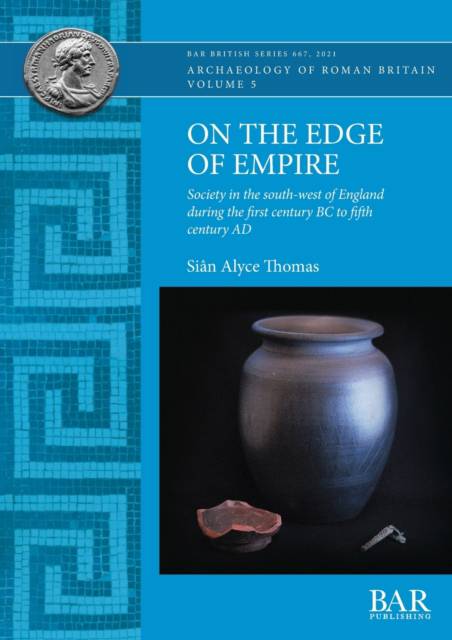
- Retrait gratuit dans votre magasin Club
- 7.000.000 titres dans notre catalogue
- Payer en toute sécurité
- Toujours un magasin près de chez vous
- Retrait gratuit dans votre magasin Club
- 7.000.0000 titres dans notre catalogue
- Payer en toute sécurité
- Toujours un magasin près de chez vous
On the Edge of Empire
Society in the south-west of England during the first century BC to fifth century AD
Siân Alyce ThomasDescription
This volume explores the relationship between people and material culture in the south-west peninsula from the first century BC to the fifth century AD. This area has often been ignored in the narratives of Britannia and the application of traditional theoretical models to the archaeology of the region has perpetuated the idea that it was largely 'un-Romanised'. In recent years new theoretical concepts have been developed which recognise that interactions in the provinces were far more complex than the simplistic dichotomy of Roman versus Native. More emphasis is also being placed on artefacts and their use in the creation of identity. This work builds on this and explores the relationship between material culture and the creation of identity. This is achieved through the analysis of the ceramics, personal adornment items and coins found in the region, gathered from excavation reports and from data recorded through the Portable Antiquities Scheme. The analysis sheds new light on the role these objects played in the renegotiation of identity that resulted from the Roman conquest.
Spécifications
Parties prenantes
- Auteur(s) :
- Editeur:
Contenu
- Nombre de pages :
- 224
- Langue:
- Anglais
- Collection :
- Tome:
- n° 667
Caractéristiques
- EAN:
- 9781407358468
- Date de parution :
- 31-12-21
- Format:
- Livre broché
- Format numérique:
- Trade paperback (VS)
- Dimensions :
- 210 mm x 297 mm
- Poids :
- 730 g

Les avis
Nous publions uniquement les avis qui respectent les conditions requises. Consultez nos conditions pour les avis.






